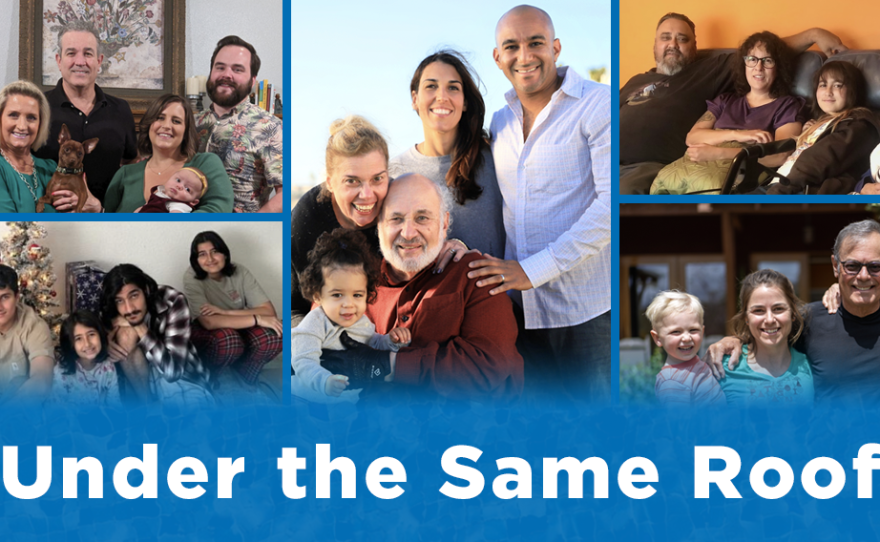San Diego is one of the top 10 cities in the country for multigenerational housing. This series tells the stories of multiple generations living under one roof.
When Ludivina Vera, 88, lived in an apartment complex for seniors last year, her daughter and son-in-law were in a constant state of worry.
“We started noticing that she was forgetting to eat,” said her daughter, Liliana Vera.
They regularly checked in on her. But Vera would also forget to hang up the phone, so they’d call and call but only get a busy signal.
“After 10, 15 minutes of trying, my wife would start freaking out,” Liliana’s husband Ricardo Islas said. “At that point, it became necessary that she came here.”
They moved Vera into their National City home. That relieved the constant worrying. But it also introduced a new set of challenges.
San Diego has the ninth most multigenerational households – meaning three or more generations living under one roof – of any large metro area in the United States. More than 10% of local residents live in multigenerational households, according to U.S. Census data.
In the Vera family’s case, the decision was partly financial. The average cost of assisted living in San Diego County is more than $5,000 a month, according to Genworth Cost of Care. That is not affordable to many families in San Diego, where median household incomes are $89,000 a year.
But the decision was also partly cultural.
Vera and Islas felt uncomfortable with the idea of putting their mother in a place for elders.
“I think it’s just the way we grew up,” Islas said. “Whether it would be my parents or her mom. When it came time to take care of a family member, I think we were all just raised not to put somebody in a home and just take care of them as long as you can.”
One of the biggest challenges has been learning how to be caretakers, while juggling full-time jobs and raising a 10-year-old girl. Liliana Vera said she didn’t know how to access services for her mom.
“You just don’t know who to call, and then some people give you some information, but they don’t give you all of the information,” Vera said. “It can’t be this hard.”
Vera said her first call was to 211 San Diego, a nonprofit that is meant to connect people with help. Then she got bounced around different government agencies while trying to access some of her mother’s social security benefits. They were eventually able to get a home health aide to visit the family four hours a week.
Several of Liliana's friends are in similar caretaker situations. She has helped them figure out which numbers to call for government aid.
Now that the family all lives together, they mostly get along, but conflicts are unavoidable. Especially with the little things like who gets to pick what the family watches on TV.
Ten-year-old Alicia admits she sometimes takes the remote control away from her grandmother, but said she always asks first.
“I think it’s kind of cool to take care of your parents,” Alicia said when asked about what it might be like when she becomes an adult.
And Ludivina is happy to spend more time with her granddaughter.
“It’s fun,” she said. “It feels good in your heart to be close to your relatives.”
Despite the stress, Liliana is glad to be in a position to care for her mother. She offered others in this situation a piece of advice.
“It’s going to change your life, it’s going to affect your relationships with your husband or partner or whoever that may be, and not necessarily negatively,” she said. “But there has to be a lot of patience and it’s going to be hard.”
-
San Diego is one of the top cities for multigenerational households in the country. There’s many reasons why two or more generations live under one roof, but in some cultures in the region, it’s the norm.
-
A San Diego federal judge has issued a first-of-its-kind ruling in an ongoing Title IX lawsuit against San Diego State University.









